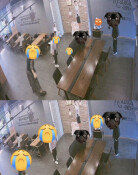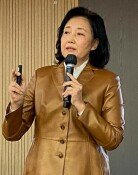Japanese Army Massacre Diary Found
A Japanese commanders journal showing that the Korean Army Commandthe Japanese Army Command that was stationed in Korea at the time of Japanese colonial rulethoroughly concealed the Jeam-ri massacre by Japanese forces during the March 1 independence movement in 1919 has been discovered.
The Japanese daily Asahi Shimbun reported on February 28 that the 15-year journal of General Utsunomiya Taro, then-commander of the Korean Army Command during the March 1 independence movement, was found.
Unsealed over 80 years after the death of Taro, the journal draws keen attention as it includes details of how the Jeam-ri slaughter was covered up, how Koreas independence movement was suppressed, and how Japan won over Korean independence activists.
When the Jeam-ri massacre took place on April 15, 1919, Gen. Utsunomiya wrote, In southern Seoul, the Japanese forces drove around 30 [Koreans] into a church, slaughtered them and set fire [to the church]. The Japanese military, however, denied the slaughter and arson when it announced the incident.
The reason was explained in his journal on April 19: [Announcing the truth] will significantly disadvantage the Empire. So it was decided in a meeting of senior officials to announce, [The people] were killed as they resisted, and not to admit the slaughter or arson, and we closed the meeting at midnight.
In his journal on the following day, he wrote, I was determined to put the first lieutenant involved in the case in heavy disciplinary confinement for 30 days because the method and means he used were inappropriate. The newspaper confirmed that a 30-day disciplinary confinement was actually imposed upon the first lieutenant in question.
The journal suggests that Gen. Utsunomiya, at first, seemingly understood the resistance of Korean people to some extent. When the March 1 independence movement begun, he criticized Japans military-centric rule by writing in his journal, It is only natural that Korean people have resentment, lament and feel agitated. Analyzing that Koreas independence movement was a deep-rooted one led by Christians, Cheondo-gyo (Religion of Heavenly Way) believers, and students and sponsored by foreign missionaries, he condemned the military-centric rule by likening it to forcing a girl into marriage against her will.
As the riot grew bigger by the day, however, he concluded, It is impossible to deal with [the disturbance] with the current methods of subjugation. On March 11, he got permission for military mobilization from the governor-general of Korea and began to put down the independence movement.
Meanwhile, the journal shows that Gen. Utsunomiya was the first to carry out culture-based rule policies, which were pushed for in earnest later under the Governor-General Saito Makoto.
During the March 1 independence movement, he suggested winning over believers of Cheondo-gyo [March 20, 1919]; he also reported to the Japanese government that Korea should be allowed to have autonomy in the future so that it could become an autonomous colony [a letter to Army Minister Tanaka Kiichi on March 1]. He also took the initiative in contacting Koreans known to be anti-Japanese [February 20, 1920; April 9, 1920].
He also stated in his journal that a religious leader who signed the March 1 Declaration of Independence came to him on February 27 and advised, Be careful, because something might happen when the state funeral of King Gojong is held.
Gen. Utsunomiya left over 7,200 historical records, including around 5,000 letters, some 2,000 documents and around 200 photographs, not to mention his 15-volume journal.
sya@donga.com







